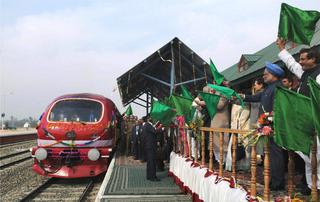Dr. Manmohan Singh: A Legacy of Leadership, Economic Vision, and Bridging Peace and Progress in Kashmir

Dr. Manmohan Singh, India’s 13th Prime Minister, remains an enduring symbol of integrity, intellect, and visionary leadership. Born on September 26, 1932, in Gah, Punjab (now in Pakistan), Dr. Singh’s journey from a humble village to the pinnacle of Indian politics is remarkable. As a technocrat-turned-politician, he brought a wealth of experience and academic rigor to governance, leaving an indelible mark on India’s political and economic landscape. His tenure as Prime Minister from 2004 to 2014 was marked by transformative reforms, a focus on inclusive growth, and a commitment to addressing complex issues such as the situation in Jammu and Kashmir.

India’s 13th Prime Minister: The Life and Achievements of Dr. Manmohan Singh
Before entering politics, Dr. Singh’s illustrious career included roles such as Chief Economic Advisor, Governor of the Reserve Bank of India, and Deputy Chairman of the Planning Commission. However, his greatest achievement came as Finance Minister in 1991, when he spearheaded economic liberalization. This bold initiative not only rescued India from a severe financial crisis but also set the stage for decades of rapid economic growth.
As Prime Minister, Dr. Singh’s leadership was characterized by humility and a steadfast focus on governance. He prioritized economic development, social welfare, and foreign policy, balancing domestic challenges with international diplomacy. His tenure also saw efforts to address regional conflicts, including his visionary approach to the Kashmir issue.
Architect of Economic Liberalization: Dr. Singh’s Transformative Reforms
Dr. Singh’s economic reforms as Finance Minister laid the foundation for his later policies as Prime Minister. He believed that economic development could be a powerful tool for resolving long-standing conflicts, including those in Jammu and Kashmir. His government’s policies emphasized infrastructure development, employment generation, and improving living standards in the region. By addressing economic grievances, Dr. Singh sought to create a conducive environment for peace and stability.
Fostering Peace in Kashmir: Dr. Manmohan Singh’s Vision and Policies
Dr. Singh’s approach to Jammu and Kashmir was guided by a blend of pragmatism and empathy. Recognizing the region’s unique challenges, he advocated for dialogue, economic reconstruction, and governance reforms. His vision extended beyond immediate conflict resolution to fostering long-term peace and integration. He believed that addressing the aspirations of the Kashmiri people was key to resolving the region’s issues.

Srinagar–Muzaffarabad Bus Service: Reconnecting Families Across Borders
One of Dr. Singh’s most notable initiatives was the launch of the Srinagar–Muzaffarabad bus service in 2005. This landmark project reconnected families divided by the Line of Control (LoC) for decades, symbolizing hope and goodwill. The service facilitated people-to-people contact, fostering mutual understanding between the Indian and Pakistani-administered regions of Kashmir. This humanitarian gesture was widely appreciated and underscored Dr. Singh’s commitment to peace.
Dialogue with Separatists: Dr. Singh’s Efforts for Lasting Peace in Kashmir
Dr. Singh’s government actively engaged with separatist leaders in Jammu and Kashmir, inviting them for dialogue to address their grievances. He believed that meaningful conversations could pave the way for reconciliation and understanding. These efforts were not without challenges, but they demonstrated his willingness to explore all avenues for peace.
Economic Development and Governance: A Roadmap for Jammu and Kashmir
Economic reconstruction and governance reforms were central to Dr. Singh’s Kashmir policy. His administration launched various initiatives to improve infrastructure, healthcare, and education in the region. These efforts aimed to provide the people of Jammu and Kashmir with better opportunities and a higher quality of life. By addressing economic disparities, Dr. Singh sought to integrate the region more closely with the rest of India.

Challenges During His Tenure: Lessons from the 2010 Kashmir Unrest
The 2010 Kashmir unrest, marked by widespread protests and violence, posed a significant challenge to Dr. Singh’s policies. The protests highlighted the deep-seated grievances and alienation felt by many in the region. In response, Dr. Singh called for dialogue and initiated measures such as financial compensation for affected families and discussions on reducing the security presence. These steps reflected his commitment to addressing the concerns of the Kashmiri people, even in difficult circumstances.
Bridging Divides: Dr. Manmohan Singh’s Humanitarian Approach to Conflict Resolution
Dr. Singh’s approach to the Kashmir issue was rooted in humanitarian values. He emphasized the importance of building trust and addressing the aspirations of the Kashmiri people. His policies sought to bridge divides and create a sense of belonging among the region’s inhabitants. Whether through dialogue, economic initiatives, or confidence-building measures, Dr. Singh consistently prioritized the welfare of the people.

Remembering Dr. Manmohan Singh: His Impact on India and Jammu & Kashmir
Dr. Manmohan Singh’s contributions to Jammu and Kashmir reflect his broader philosophy of governance: a commitment to peace, development, and inclusivity. His efforts to address the region’s challenges were marked by empathy, pragmatism, and a long-term vision. As India remembers his legacy, his approach to the Kashmir issue serves as a reminder of the power of dialogue and development in resolving complex conflicts. Dr. Singh’s impact on Jammu and Kashmir will be remembered as a testament to his dedication to the unity and progress of India.





